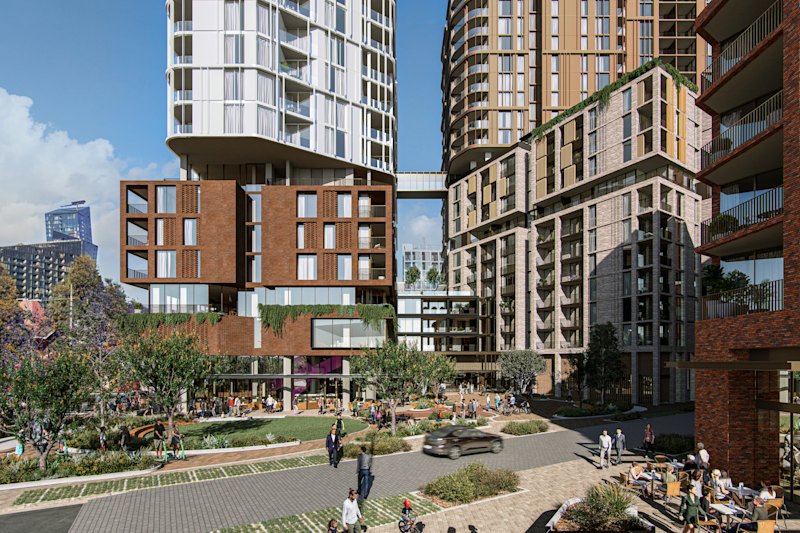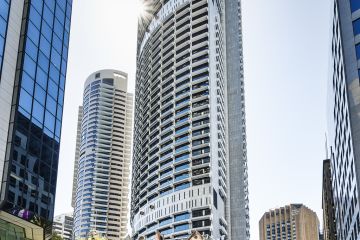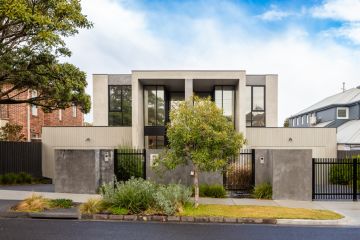Melbourne, Sydney property prices fall as other capital cities rise: CoreLogic
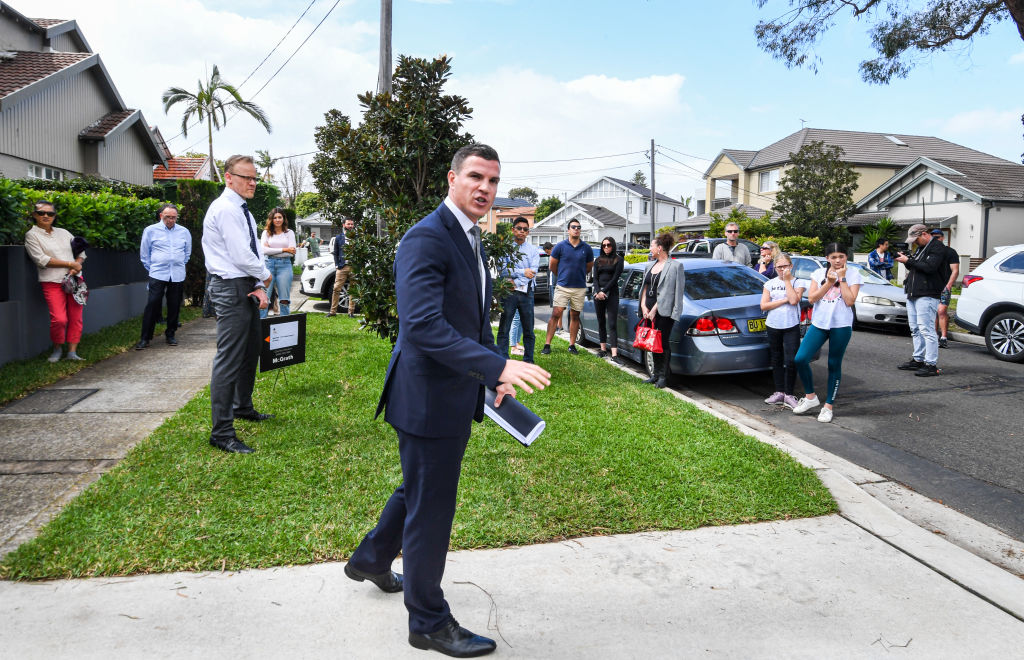
Home buyers are defying the pandemic recession, competing for the few homes for sale and putting a floor under property price falls in most capital cities, new figures reveal.
Sydney home values fell just 0.3 per cent in September to a median of $859,943, a rate of decline that has eased since July, the latest CoreLogic Home Value Index released on Thursday found. The figure includes houses and apartments.
Values in pandemic-hit Melbourne fell hardest, down 0.9 per cent in the month to a median of $666,796, the report said, tipping activity to pick up once restrictions were lifted in October.
The remaining capital cities have all returned to some level of growth and regional markets have continued to outperform their metropolitan counterparts, according to the index.
The Melbourne and Sydney falls dragged on the national result, with values down 0.1 per cent across the country, although this was the smallest drop since values began to decline in May.
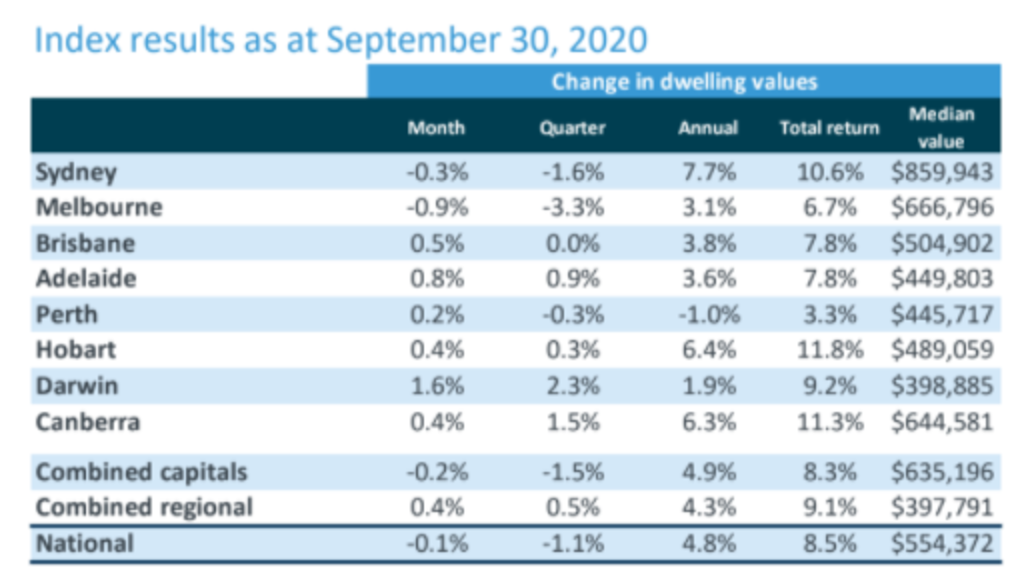
The modest falls come as consumer confidence increased and COVID-19 cases drop to low levels.
The combination of low interest rates, government grants and reduced numbers of homes for sale had supported the housing market against further declines, according to CoreLogic head of research Tim Lawless.
“The aggregate effect of low mortgage rates, and the prospect that rates could fall further, low inventory levels, government incentives and improving consumer sentiment seems to be outweighing the negative economic shock brought about by the pandemic,” Mr Lawless said.
The low levels of homes for sale is also a key factor supporting property prices with new listing numbers nationally down 22 per cent than a year ago and 25 per cent below the five-year average.
The total amount of advertised homes is also down 14 per cent than a year ago, and 17 per cent below the five-year average.
The low listings number were putting a floor underneath the market, Mr Lawless said.
“The imbalance between available supply and housing demand is one of the reasons why housing values have hardly fallen through the COVID period so far, and helps to explain the recent upward trend in values across some cities,” he said.
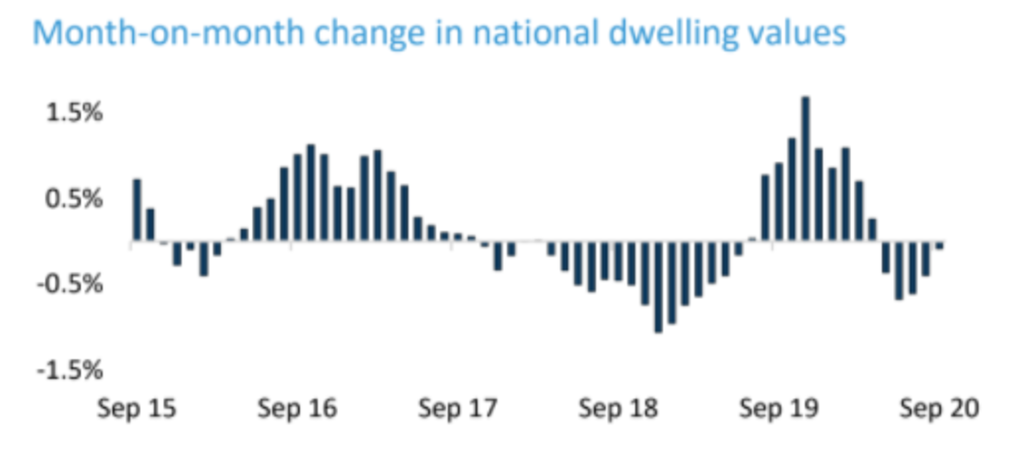
The strongest rise in prices was in Darwin, with a 1.6 per cent lift in September to a median of $398,885.
It was followed by Adelaide where home values grew 0.8 per cent to $449,803 and Brisbane which rose 0.5 per cent to $504,902.
Hobart and Canberra home values both increased 0.4 per cent to $489,059 and $644,581, respectively.
Perth property prices rose 0.2 per cent to $445,717.
“We aren’t seeing any signs of a rise in distressed listings or stock starting to pile up in the market,” Mr Lawless said.
“In fact, the opposite seems to be true, where new listings are being absorbed faster than the rate at which they are being added.”
He said the housing market outlook would be subject to a number of headwinds including a rise in unemployment, an end to the mortgage holiday and tapering off in government support.
A rise in urgent or distressed listings would be another test for the resilience of housing values, he said.
Domain senior research analyst Nicola Powell said Sydney and Melbourne continue to experience price declines because they were impacted most by border closures.
“What we’ve seen are that demand shocks have impacted Sydney and Melbourne more so than any other capital city. They have more exposure to overseas migration, Dr Powell said.
Dr Powell said other cities were “holding up incredibly well” during a recession due to low interest rates and government incentives that help spur first-home buyers to get into the market.
“We have got a historically low interest rate environment. Those who have job security … it’s helping activate those people [to] upsize.”
We recommend
We thought you might like
States
Capital Cities
Capital Cities - Rentals
Popular Areas
Allhomes
More






